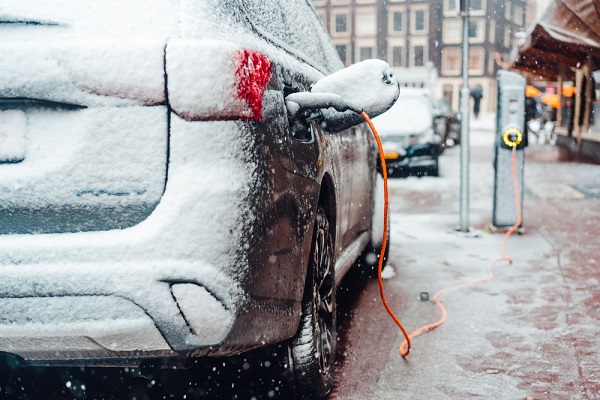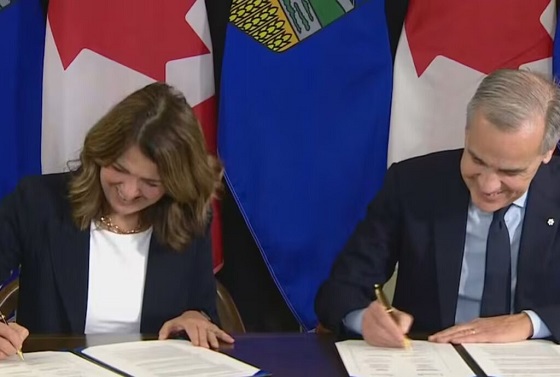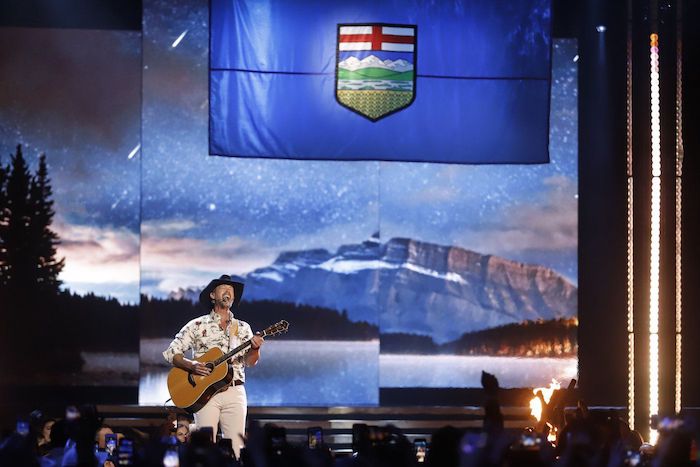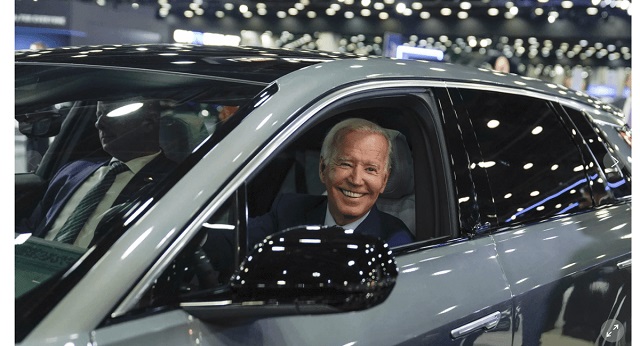National
Paul Wells on PM Trudeau’s cabinet shake up
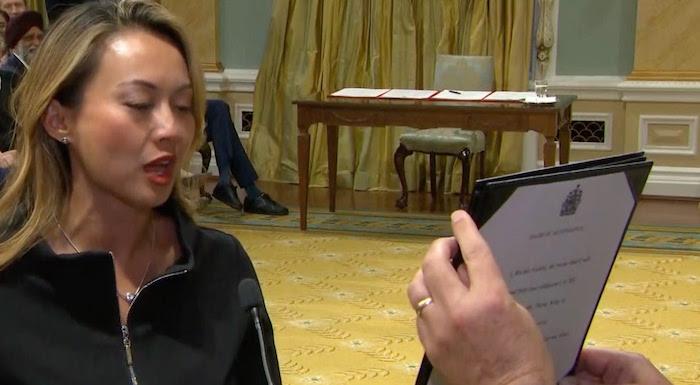
Rechie Valdez teared up a bit taking her oath. It was nice.
Posted with permission from Substack author Paul Wells
The army you have
Exciting new combinations of Liberals and syllables
I skipped almost the entire cabinet-shuffle business on Wednesday. I think I’ve mostly managed to avoid getting jaded in this job, but there are days, boy howdy. Welcome, Minister Blah Blah Blah to the crucial office of Provision, Preparedness, Children and Popular Song. Congratulations, hug your kids. Next.
Then here was Rechie Valdez’s voice catching as she took the oaths (one for entry into the Council of the Elders and the other to join the Resonant Circle of the One, or whatever) and for just a minute, boredom took a holiday. The people who do these jobs should be emotional about them. Optimism is a good thing. Small businesses are definitely on the list of things worth caring about. Go get ’em, minister.
Paul Wells is a reader-supported publication. To receive new posts and support my work, consider becoming a free or paid subscriber.
A foolish consistency is the hobgoblin of days like this. During the 2021 campaign, when things were going badly, the official line out of the Trudeau brain trust was that the prime minister “doesn’t do shakeups.” And yet here’s one now. What’s changed?
There are always two ready answers to such a question. For one, the world has changed, as it always does. Previous shuffles addressed the astonishing 2016 votes for Brexit and Trump, and the less epochal but still significant election of Doug Ford as Ontario premier in 2018. In late 2021, when Trudeau was randomly firing one of the most experienced ministers in his cabinet, it might still have been possible to believe the PM’s third term in office wouldn’t be dominated by Russia, China, and the knock-on effects from a sharp increase in immigration. The misplaced optimism of that bygone era 20 months ago can no longer be maintained.
Second, the electoral context has changed. “We have all the time in the world before the next election” has become “We sure don’t,” and the readers who get cross when I link to horse-race polls are going to hate clicking on this.
I guess this shuffle is designed to address the Poilievre threat? Kind of? Listlessly? A year ago Trudeau was already getting advice to make sharp, noticeable changes in his team, message and style. (Yes, I just linked to myself.) Today he put Sean Fraser in charge of Housing and Marc Miller in charge of Immigration. Those might be the two most encouraging moves among dozens, both for Liberals who hope “good communicators” won’t turn out to be a sad joke, and for citizens who hope strong administrators might, even if only occasionally, be put in charge of challenging files.
The rest of the day’s news is puzzling. Seamus O’Regan to Labour? I thought the boss liked him. Pablo Rodriguez to Transport would seem to be yet another case of ministerial burnout on all those Web Giant-Killer bills that have become the torment of a succession of Heritage ministers. Pascale St.-Onge replaces him on the censorship ‘n’ subsidies beat, ringing a new variation on the eternal question: Why do they call it Canadian Heritage if only ministers from Quebec are allowed to do the job?
Gary Anandasangaree at Crown-Indigenous Relations and Arif Virani as Minister of Justice and Attorney-General are two cases of rookie ministers promoted to tough jobs. I’ve heard good things about both of them. Both have relevant committee and parliamentary-secretary experience. Virani was Jody Wilson-Raybould’s parliamentary secretary; she seems not to have kept many fond memories. (In her memoir she calls him one of the “talking heads” who were sent out “to make comments that evidence has now shown were not accurate or right.” In general, Trudeau, a non-lawyer mostly counselled by non-lawyers, seems to be chronically unsure why he should have a justice minister or what they are good for.)
Freeland, Guilbeault, Champagne and Joly remain in their previous jobs, evidence of their clout. On the other hand, I maintain that Rodriguez’s being shuffled was evidence of his clout. By now it’s clear that Freeland writes her own rules: she does the work she wants to do, to varying degrees of success, and nobody in this government can make her do anything else. Her fate is bound up with the prime minister’s. Probably neither of them expected it, but the stability of the tandem is now part of Trudeauworld’s game physics.
Cabinet shuffles defy confident prediction, or should. Will Jean-Yves Duclos make a difference as Public Services and Procurement Minister? He should. He’s a detail man in a detail job. But ministers are rarely better than they are permitted to be by circumstances and by the circle around the PM. Duclos will shine if this government wants to buy stuff, and not if it doesn’t.
That 2021 bit of campaign spin wasn’t entirely false. In some ways this prime minister really doesn’t do shakeups. He keeps his chief of staff, his indispensable deputy, his own way of thinking and talking about his government. Everything else swirls around. He came to office promising real change. Increasingly what’s real is what doesn’t change.
Paul Wells is a reader-supported publication. To receive new posts and support my work, consider becoming a free or paid subscriber.
Invite your friends and earn rewards
Business
The world is no longer buying a transition to “something else” without defining what that is
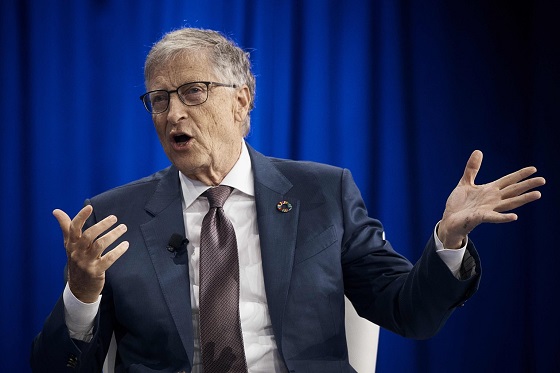
From Resource Works
Even Bill Gates has shifted his stance, acknowledging that renewables alone can’t sustain a modern energy system — a reality still driving decisions in Canada.
You know the world has shifted when the New York Times, long a pulpit for hydrocarbon shame, starts publishing passages like this:
“Changes in policy matter, but the shift is also guided by the practical lessons that companies, governments and societies have learned about the difficulties in shifting from a world that runs on fossil fuels to something else.”
For years, the Times and much of the English-language press clung to a comfortable catechism: 100 per cent renewables were just around the corner, the end of hydrocarbons was preordained, and anyone who pointed to physics or economics was treated as some combination of backward, compromised or dangerous. But now the evidence has grown too big to ignore.
Across Europe, the retreat to energy realism is unmistakable. TotalEnergies is spending €5.1 billion on gas-fired plants in Britain, Italy, France, Ireland and the Netherlands because wind and solar can’t meet demand on their own. Shell is walking away from marquee offshore wind projects because the economics do not work. Italy and Greece are fast-tracking new gas development after years of prohibitions. Europe is rediscovering what modern economies require: firm, dispatchable power and secure domestic supply.
Meanwhile, Canada continues to tell itself a different story — and British Columbia most of all.
A new Fraser Institute study from Jock Finlayson and Karen Graham uses Statistics Canada’s own environmental goods and services and clean-tech accounts to quantify what Canada’s “clean economy” actually is, not what political speeches claim it could be.
The numbers are clear:
- The clean economy is 3.0–3.6 per cent of GDP.
- It accounts for about 2 per cent of employment.
- It has grown, but not faster than the economy overall.
- And its two largest components are hydroelectricity and waste management — mature legacy sectors, not shiny new clean-tech champions.
Despite $158 billion in federal “green” spending since 2014, Canada’s clean economy has not become the unstoppable engine of prosperity that policymakers have promised. Finlayson and Graham’s analysis casts serious doubt on the explosive-growth scenarios embraced by many politicians and commentators.
What’s striking is how mainstream this realism has become. Even Bill Gates, whose philanthropic footprint helped popularize much of the early clean-tech optimism, now says bluntly that the world had “no chance” of hitting its climate targets on the backs of renewables alone. His message is simple: the system is too big, the physics too hard, and the intermittency problem too unforgiving. Wind and solar will grow, but without firm power — nuclear, natural gas with carbon management, next-generation grid technologies — the transition collapses under its own weight. When the world’s most influential climate philanthropist says the story we’ve been sold isn’t technically possible, it should give policymakers pause.
And this is where the British Columbia story becomes astonishing.
It would be one thing if the result was dramatic reductions in emissions. The provincial government remains locked into the CleanBC architecture despite a record of consistently missed targets.
Since the staunchest defenders of CleanBC are not much bothered by the lack of meaningful GHG reductions, a reasonable person is left wondering whether there is some other motivation. Meanwhile, Victoria’s own numbers a couple of years ago projected an annual GDP hit of courtesy CleanBC of roughly $11 billion.
But here is the part that would make any objective analyst blink: when I recently flagged my interest in presenting my research to the CleanBC review panel, I discovered that the “reviewers” were, in fact, two of the key architects of the very program being reviewed. They were effectively asked to judge their own work.
You can imagine what they told us.
What I saw in that room was not an evidence-driven assessment of performance. It was a high-handed, fact-light defence of an ideological commitment. When we presented data showing that doctrinaire renewables-only thinking was failing both the economy and the environment, the reception was dismissive and incurious. It was the opposite of what a serious policy review looks like.
Meanwhile our hydro-based electricity system is facing historic challenges: long term droughts, soaring demand, unanswered questions about how growth will be powered especially in the crucial Northwest BC region, and continuing insistence that providers of reliable and relatively clean natural gas are to be frustrated at every turn.
Elsewhere, the price of change increasingly includes being able to explain how you were going to accomplish the things that you promise.
And yes — in some places it will take time for the tide of energy unreality to recede. But that doesn’t mean we shouldn’t be improving our systems, reducing emissions, and investing in technologies that genuinely work. It simply means we must stop pretending politics can overrule physics.
Europe has learned this lesson the hard way. Global energy companies are reorganizing around a 50-50 world of firm natural gas and renewables — the model many experts have been signalling for years. Even the New York Times now describes this shift with a note of astonishment.
British Columbia, meanwhile, remains committed to its own storyline even as the ground shifts beneath it. This isn’t about who wins the argument — it’s about government staying locked on its most basic duty: safeguarding the incomes and stability of the families who depend on a functioning energy system.
Resource Works News
Business
High-speed rail between Toronto and Quebec City a costly boondoggle for Canadian taxpayers

“It’s a good a bet that high-speed rail between Toronto and Quebec City isn’t even among the top 1,000 priorities for most Canadians.”
The Canadian Taxpayers Federation is criticizing Prime Minister Mark Carney for borrowing billions more for high-speed rail between Toronto and Quebec City.
“Canadians need help paying for basics, they don’t need another massive bill from the government for a project that only benefits one corner of the country,” said Franco Terrazzano, CTF Federal Director. “It’s a good a bet that high-speed rail between Toronto and Quebec City isn’t even among the top 1,000 priorities for most Canadians.
“High-speed rail will be another costly taxpayer boondoggle.”
The federal government announced today that the first portion of the high-speed rail line will be built between Ottawa and Montreal with constructing starting in 2029. The entire high-speed rail line is expected to go between Toronto and Quebec City.
The federal Crown corporation tasked with overseeing the project “estimated that the full line will cost between $60 billion and $90 billion, which would be funded by a mix of government money and private investment,” the Globe and Mail reported.
The government already owns a railway company, VIA Rail. The government gave VIA Rail $1.9 billion over the last five years to cover its operating losses, according to the Crown corporation’s annual report.
The federal government is borrowing about $78 billion this year. The federal debt will reach $1.35 trillion by the end of this year. Debt interest charges will cost taxpayers $55.6 billion this year, which is more than the federal government will send to the provinces in health transfers ($54.7 billion) or collect through the GST ($54.4 billion).
“The government is up to its eyeballs in debt and is already spending hundreds of millions of dollars bailing out its current train company, the last thing taxpayers need is to pay higher debt interest charges for a new government train boondoggle,” Terrazzano said. “Instead of borrowing billions more for pet projects, Carney needs to focus on making life more affordable and paying down the debt.”
-

 National1 day ago
National1 day agoCanada’s free speech record is cracking under pressure
-
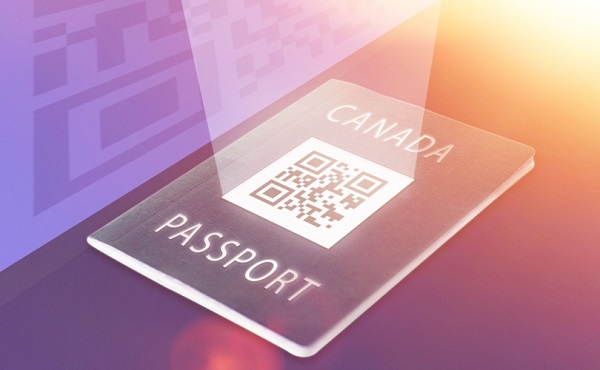
 Digital ID22 hours ago
Digital ID22 hours agoCanada considers creating national ID system using digital passports for domestic use
-

 Business1 day ago
Business1 day agoAlbertans give most on average but Canadian generosity hits lowest point in 20 years
-

 Daily Caller2 days ago
Daily Caller2 days agoUS Supreme Court Has Chance To End Climate Lawfare
-

 Business1 day ago
Business1 day agoTaxpayers Federation calls on politicians to reject funding for new Ottawa Senators arena
-

 Crime2 days ago
Crime2 days agoU.S. seizes Cuba-bound ship with illicit Iranian oil history
-

 Bruce Dowbiggin1 day ago
Bruce Dowbiggin1 day agoCarney Hears A Who: Here Comes The Grinch
-

 International1 day ago
International1 day ago100 Catholic schoolchildren rescued, Nigeria promises release of remaining hostages




